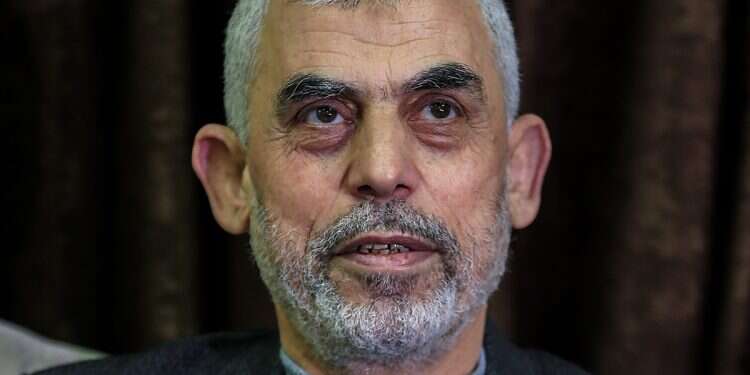Hamas's top leader Yahya Sinwar has managed to elude Israeli intelligence and military efforts to locate him, thanks to a low-tech communications system developed during his time in prison, according to a report by The Wall Street Journal.
The system, which relies heavily on handwritten notes and a network of couriers, has allowed Sinwar to direct Hamas operations while hiding in underground tunnels in Gaza. This method has frustrated Israeli attempts to track and target the mastermind behind the October 7 attack on Israel that killed 1,200 people and sparked the ongoing war in Gaza.
Arab cease-fire mediators have provided insight into Sinwar's communication methods. A typical message from the Hamas leader is handwritten and passed through a chain of trusted couriers, some of whom may be civilians. The messages often use complex codes that vary depending on the recipient, circumstances, and timing.
The Israeli military declined to comment on the matter, while Hamas did not respond to questions about Sinwar's communication methods. Sinwar's approach to evading detection has become increasingly sophisticated following Israeli strikes that killed other high-ranking Hamas and Hezbollah officials. The assassination of Saleh al-Arouri, Hamas's deputy political leader, in Beirut prompted Sinwar to further tighten his security measures.

The rudimentary communication system has its roots in Hamas' early years and was refined during Sinwar's time in Israeli prisons. As the founder of Hamas's internal security police, Majd, Sinwar developed methods for distributing encoded messages within prisons, including wrapping letters in bread balls that could be tossed between prison sections.
Israel estimates that Sinwar spent years planning for a major conflict, including the construction of an extensive tunnel network and the establishment of a communication system designed to circumvent modern intelligence gathering techniques.
The effectiveness of Sinwar's methods has made it difficult for Israeli forces to confirm his location, with some speculating that he may not even be in Gaza. His role has become increasingly crucial following the reported assassination of Ismail Haniyeh, Hamas's former political leader, in Tehran – an attack attributed to Israel.
Sinwar's cautious approach has at times slowed negotiations to end the war, which has resulted in the deaths of more than 41,000 Palestinians, according to Palestinian health officials. Hamas-led fighters took about 250 people hostage in the October 7 attacks, with 97 still remaining in Gaza, many believed to be dead.
Despite the challenges posed by his communication methods, Sinwar has managed to relay messages quickly when necessary. For example, he sent a condolence letter to Haniyeh within hours of an Israeli airstrike that killed three of Haniyeh's sons in April.
The Hamas leader's ability to evade detection highlights the limitations of even the most sophisticated intelligence-gathering techniques when faced with determined low-tech counter-measures. As Thomas Withington, an expert on electronic warfare and an associate research fellow at London's Royal United Services Institute think tank, noted, "That split second where you forget discipline, that can sign your death warrant."




